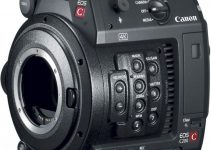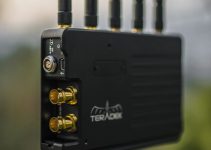It’s undeniable fact that Canon has revolutionized the independent filmmaking industry forever with the introduction of the Canon 5D Mark II back in 2008. Over the last decade, the company continued its quest to redefining the limitations of camera technologies, thus helping creative professionals better tell their stories. With their very first full-frame mirrorless camera, the EOS R, the Japanese behemoth hopes to give professionals a creative tool that continues the company’s legacy in filmmaking.
Despite the fact that the EOS R has received mixed reviews amongst filmmakers, there are many who have already found a place for the camera in their production gear bag – specifically using the EOS R as a B-Cam in conjunction with a larger camcorder such as the Canon EOS C200. Carl Yates of UK-based camera rental company ProAV TV discusses this use-case scenario while examining how well the EOS R can blend with C200 footage.
Before looking at the comparison, it’s important to note some distinct differences between the two counterparts. For starters, the EOS R is not capable of shooting in a RAW format, unlike the more expensive C200. However, you can use the EOS R’s HDMI output for the best recording quality possible – up to 10-bit 1080p or 4K footage. That being said, if you wanted to record with both cameras at the best quality possible, you’d record to MP4 with the C200 and 10-bit video through an external recorder with the EOS R.
Even though the mirrorless camera has its limitations, one feature that it shares with the C200 is the inclusion of Canon’s acclaimed Dual-Pixel Autofocus capabilities. This accurate and fast-adapting autofocus system is one of Canon’s claim to fame, allowing video shooters to focus on their work, rather than toil over whether or not their subject is in focus.
After having explained the advantages and disadvantages of the EOS R, Yates decided to test out just how well the camera could work with the more expensive C200. To do this, he put both siblings side-by-side in an improvised interview-style setup, using the C200 as the A-Cam and the EOS R as the B-Cam.
In terms of camera settings, the EOS R and C200 were set to record using C-Log 3 and C-Log respectively. As Yates states, it was apparently difficult to match the colors between the two cameras. That’s mainly due to the fact that the C200 produced a more magenta hue on skin tones and areas with strong reds, such as the motorbike in the background of the shot.
Nevertheless, the colors between the two cameras could be corrected relatively easily in post, even though Yates was expecting better results right out of the box.
After the first test, a second attempt to match the cameras was made, this time the C200 was set to record with the same Log profile as the EOS R. The resulting footage brought out much more similar color rendition right out of both cameras, which could be further improved with some post-production color grading. Keep in mind that while the colors are easier to match using regular Canon Log over Canon Log 3, this option does result in less dynamic range on the C200.
All in all, with the proper settings, it seems that the EOS R is definitely a viable option for use as a B-Cam, especially when paired with the C200. With similar log profiles, computer-friendly recording codecs and, of course, Canon’s Dual Pixel Autofocus, the C200 and EOS R have the potential to act as an amazing dual-camera setup regardless the concept and style of shooting.
[source: ProAV TV]
Order Links:
Canon EOS C200 Cinema Camera (EF-Mount) (B&H, Amazon)
Canon EOS R Mirrorless Digital Camera (B&H, Amazon)
Disclaimer: As an Amazon Associate partner and participant in B&H and Adorama Affiliate programmes, we earn a small comission from each purchase made through the affiliate links listed above at no additional cost to you.



